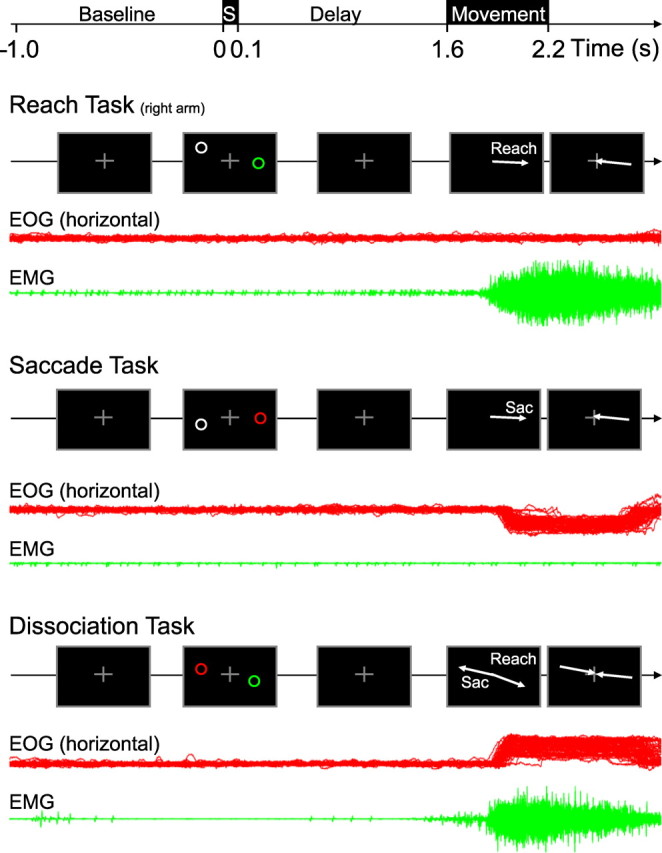Figure 1.

Experimental design. Sequence of stimuli and subject instructions during all three task conditions: delayed-reach task, delayed-saccade task, and dissociation task. All trials began with fixating and pointing to a central cross for a 1 s period. Next, two stimuli were presented for 100 ms on opposite sides of the fixation point. The red/green stimulus instructed the type of movement to prepare to that location; the gray stimulus was a noninformative cue and served to balance visual input across the tasks. After an additional delay of 1.5 s, the central cross disappeared, instructing the subject to perform the movement(s). In the dissociation task, this was a simultaneous reach and saccade in opposite directions. In reach and saccade tasks, the noninstructed effector kept the initial central position during the movement. Corresponding eye position traces (horizontal EOG) and hand movement EMG of a typical subject are shown in red and green, respectively, for each task condition.
